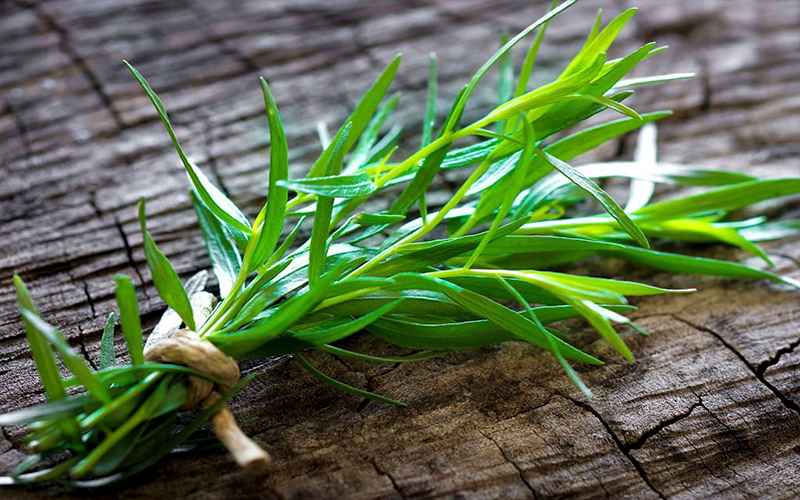When it comes to cooking, you’ll want to make sure that your food has flavor. To add a bit of touch and personality to your food, then it’s best to invest in spices that suit your dish and create a distinct taste that would suit ANY palate! One of the great spices you’ll want to consider would be tarragon, known for its presence in roasted chicken. But if you’ve got none of that in the house, what makes a great tarragon substitute?
It will depend on your dish and the texture you want it to be! If you want to see the best tarragon substitutes suitable for your food, then read on as I talk about everything you should know about tarragon and ideal alternatives.
Looking for a Tarragon Substitute? The Top 10 You Need to Try!
- What is Tarragon?
- What Do You Use Tarragon For?
- What Tarragon Substitute Do You Need?
- Marjoram
- Thyme
- Dill
- Chervil
- Aniseed
- Oregano
- Rosemary
- Fennel Seed
- Tips on Using a Tarragon Substitute For Cooking
- In Conclusion
What is Tarragon?

You’ve probably heard of tarragon before, most especially when used in chicken or turkey! But there’s more to this spice than what you think.
Tarragon isn’t an ancient herb but became more popular during the 16th and 19th century. It’s a small and shrubby herb, its scientific name being Artemisia dracunculus. It’s part of the sunflower family, cultivated from two species (French and Russian). Most of the tarragon spices you get come from the French plant, with its variety being glossier and pungent as compared to its Russian counterpart.
It’s used as a flavoring for vinegar, pickles, sauces, meat, soups, and also for dishes that call for both tomato and egg. It has a bittersweet flavor with an anise-like aroma. It’s ideal for basting your chicken or seafood with as well.
What Do You Use Tarragon For?
I mentioned the types of food you can use tarragon with, but how can you incorporate this spice (or its substitute) into your dishes? Here are the uses of tarragon:
- Vinegar : Making tarragon vinegar will give a more distinct flavor to your sauces. You can use it as a side for special dishes, or as a salad dressing. All you need to do is add a few leaves to vinegar and leave it for a month before using.
- Sauce: This is ideal for any chicken dish. Use chopped tarragon and mix it with butter, seasoning, and chicken broth. Either pour it over your chicken or dip it in! You can also create a spread out of it by mixing it with feta cheese, spreading it on top of crackers or bread.
- Seasoning Meat: This will give a savory flavor with a hint of sweetness, the perfect balance to any dish! You can also use tarragon (or its substitute) to season sweet corn.
What Tarragon Substitute Do You Need?
It might be difficult figuring out what you need for a tarragon substitute, but it just depends on what you’re cooking!
If you have no tarragon at home, hate the taste, or are unfortunately allergic to it, then here are the best tarragon substitutes you can use according to the dishes you’re whipping up!
Marjoram

This spice is ideal for certain meats or salads. It comes from the mint family and has the similar taste to oregano, with a sweeter (yet spicy!) flavor. You can use this instead of tarragon by adding it during the last few steps of your recipe. Use FRESH Marjoram leaves to have a more distinct flavor.
Thyme
Thyme is one of the best tarragon substitutes you can find, as it has a subtle and dry aroma with a minty flavor you’ll appreciate. It’s a versatile herb that can replace a LOT of spices as well, used in grilled dishes, dips, soup, and even creamy sauces.
You can either use fresh or dried thyme, with the former having more flavor.
Related: Best Lemongrass Substitute
Dill
If you’re making a dish composed of fish or other types of seafood and meat, then dill is an ideal herb to use. It has a subtle and bitter flavor resembling the tarragon spice. But it might have a more bitter flavor, so only use a few dill leaves before adding more if preferred.
Chervil
Chervil might sound unfamiliar to some, but this is an ideal herb similar to parsley and chives. It’s an excellent tarragon substitute because it has an anise seed-like flavor, which is slightly sweet and savory. It also has a similar aroma to tarragon.
It’s ideal for making herbed butter or salads. You can even use it for creamy sauces or top it with eggs.
Aniseed
Tarragon has similar flavors and aroma compared to the star anise. It has the licorice flavor suitable for many Asian dishes, perfect for candies or teas. Since it has the sweet flavors, you can use it for creating jams or jellies, as well as alcoholic drinks and pastries.
So if you’re creating sweet dishes, you can replace tarragon with aniseed for more pleasing notes instead.
Oregano
If you want a more intense flavor, then you can go for oregano, which has a bolder flavor as compared to tarragon and major jam. It’s not only ideal for flavoring your dishes but for its many health benefits as well.
But take note that since oregano is a bit stronger than some spices, so make sure to add small amounts of it for a flavor-packed dish.
Rosemary
This is a favorite herb you can easily substitute for tarragon, as it’s known to have a mustard-like taste with a combination of natural and woody flavors. It’s ideal for making Italian dishes, such as meatballs or pizza. It’s also perfect for steak or to add onto olive oil for dipping your bread.
Fennel Seed
Fennel seeds have a similar taste to anise seed (which is like tarragon) but have a slightly different flavor that makes it unique. Fennel is ideal for flavoring meat and even for creating ice cream!
The seed is also medicinal, making it beneficial for you when substituting it for tarragon. Use it as if you were using anise seeds, but don’t go overboard and make sure to taste the dish before adding more.
Tips on Using a Tarragon Substitute For Cooking
Now that you know what to substitute tarragon with, how can you properly cook your dishes with any of these ingredients and still have the same flavor?
Like mentioned from some substitutes, you won’t be able to get the same flavor as compared to using tarragon itself. So don’t expect it to have the distinct characteristics you are familiar with when using a tarragon substitute (but that doesn’t mean it will taste bad!).
– But as long as you store it properly and use the right amount of it, then you’ll still have the similar texture or flavor you aim for.
– Remember to store spices in cool and dry spaces, in airtight containers or jars as much as possible. Only open the container when using it, then put it back in the cabinet after.
– Follow the directions when substituting tarragon. It’s better to add less and then taste it before judging the flavor and adding more according to what you prefer.
In Conclusion
Planning on cooking up a sumptuous meal but missing that tarragon spice you need to complete it? Then you can find an abundance of tarragon substitutes to help you out! There are many types of spices and ingredients you can replace the spice with to achieve better flavor without compromising its texture (too much!).
I hope that this article helps you find a good tarragon substitute for having you produce a delicious meal for your loved ones to enjoy. So what are you waiting for? If you have no tarragon in the house and need one quickly, then try any of these substitutes next time.
If you enjoyed the article or would like to share your tips on substituting tarragon, then comment down below. I would love to hear what you have to think.




